News & Events
March 4, 2021
Drift: Art and Dark Matter exhibition NOW OPEN!
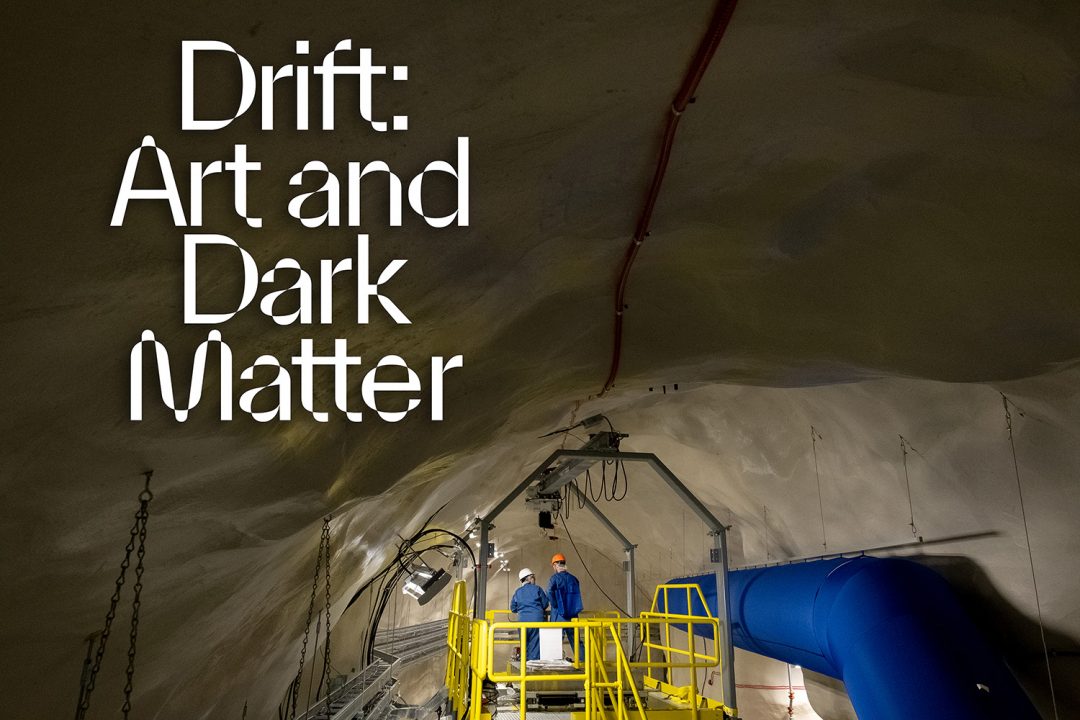
The search for dark matter is one of the most captivating research endeavours in scientific history.
“Dark matter” is a term that conjures up all manner of mysterious cosmic substrate and it is no surprise to see it represented in various forms in fantasy and science fiction stories. The science of dark matter is equally mysterious; a yet-to-be-detected invisible matter that holds galaxies and galaxy clusters together and comprises roughly 80% of all matter in the universe.
In 2019, the McDonald Institute in partnership with SNOLAB and the Agnes Etherington Art Centre at Queen’s University endeavoured to bring a creative perspective to the dark matter research in Canada.
Artists Josèfa Ntjam, Nadia Lichtig, Anne Riley, and Jol Thoms were invited to participate in a residency and visited the Agnes Etherington Art Centre, the astroparticle physics labs at the McDonald Institute at Queen’s University, and travelled to Sudbury to go underground and see the dark matter experiments at SNOLAB.
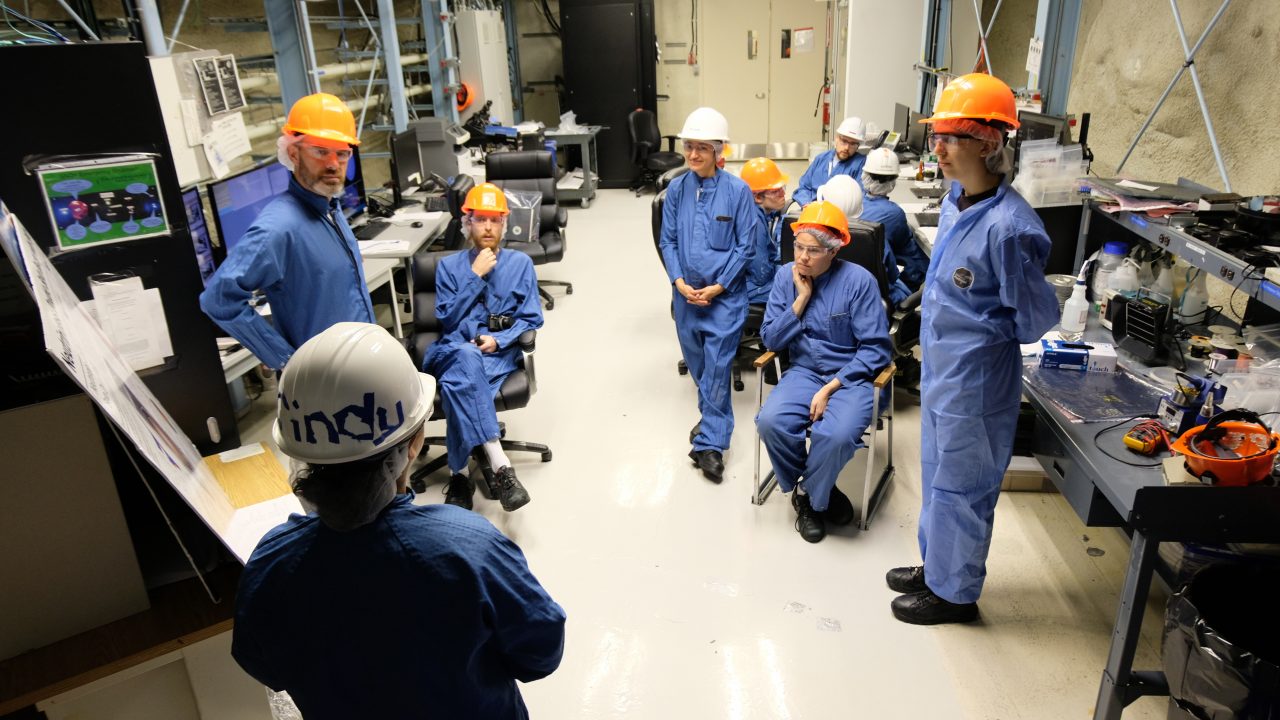
Image: Artists and Drift project coordinators meet with neutrino physicist Cindy Lin in the SNO+ control room. Photo credit: Zac Kenny
This is an extremely exciting time for dark matter science in Canada. Across Canada, and with a hub in Ontario, astroparticle theory groups are growing and continually developing new models and simulations. Underground at SNOLAB, multiple new experiments are being constructed with super-sensitive detection techniques designed to detect and define dark matter.
The group of artists arrived at the residency from different backgrounds, and with differing understandings of what dark matter and astroparticle physics was all about. Artist Nadia Lichtig felt the experience of going underground to SNOLAB was incredibly unique; “When you do it for the first and last time in your life, you feel that it’s not a normal thing to do, to go under the earth” explains Drift artist Lichtig, “And then you change worlds again, you enter this super-clean laboratory, without any dust … it’s an extraordinary experience.”
The researchers, engineers, and technicians at Queen’s and SNOLAB were enthusiastic about sharing and explaining their work. Nearly everyone the artists met with over their two-week visit, said that they were looking forward to what would be created. Not knowing exactly what the artists were looking for, created excitement about the possibility that any little detail or comment might provide inspiration for the artwork. One instance of this was when artist Jol Thoms had expressed an interest in making audio recordings, Dr. Tony Noble wanted to show him the audio readout of the PICO 40L detector. The PICO team was working to resolve an issue where some machine noise was being picked up by the microphone array.
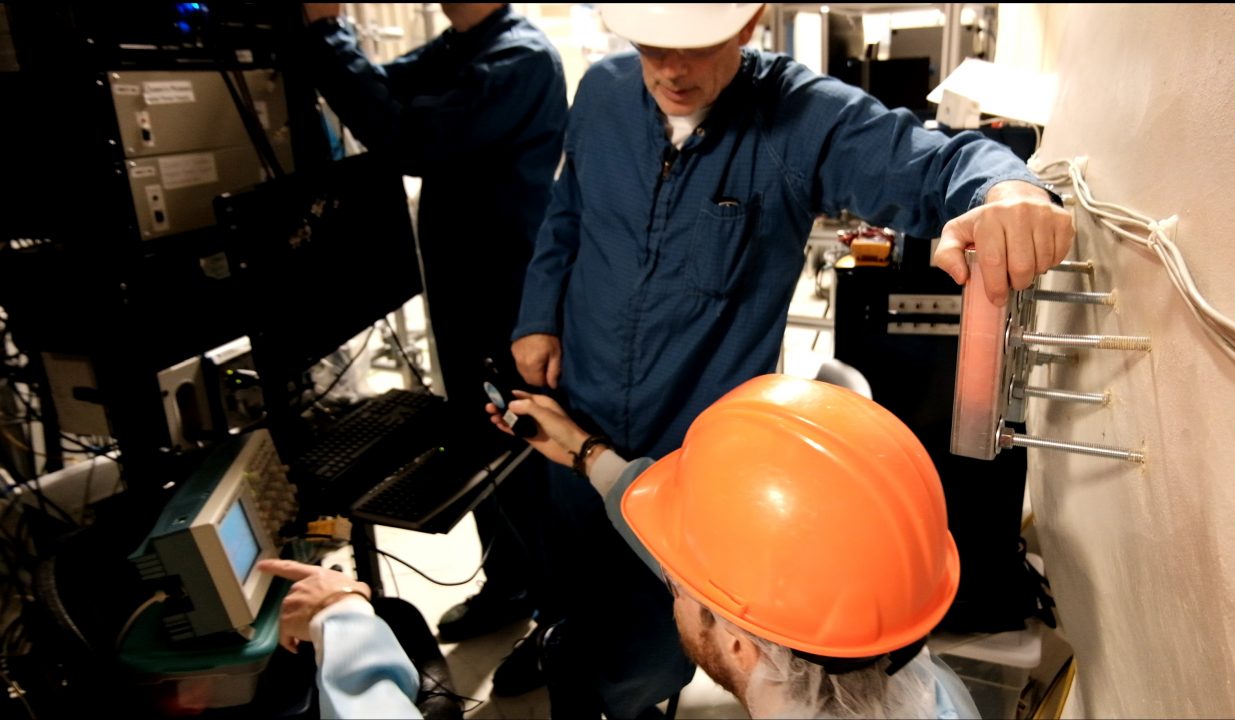
Image: Artist Jol Thoms examines and films the detector display as Dr. Tony Noble explains an issue with machine noise in the PICO 40L dark matter experiment. Photo Credit: Zac Kenny
During the residency, the artists were able to share some of their work and interests with members of the research teams as well, providing insight into how the artists might incorporate SNOLAB and the science into the art.
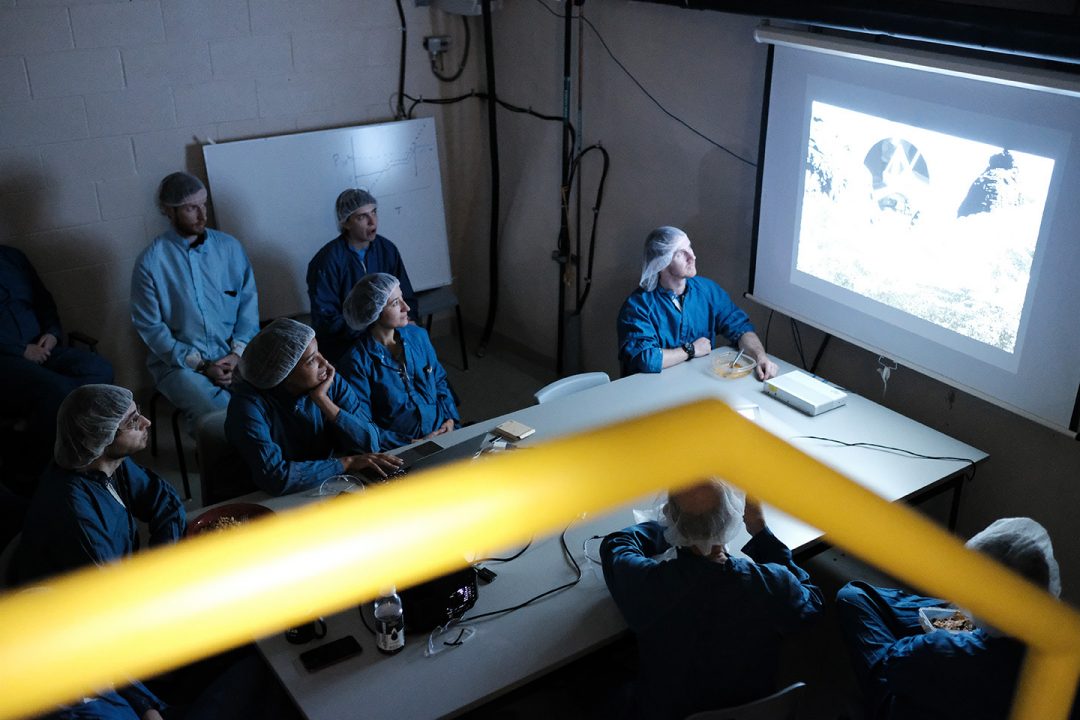
Image: Artist Josèfa Ntjam talks about her art practice with some of the SNOLAB staff in the underground meeting room. Photo credit: Gerry Kingsley
After the residency visits, the artists returned to their home studios to begin developing their ideas for the exhibition. During that time, the project coordination team arranged to continue some of the conversations initiated with physicists during the visits, and provide an opportunity to connect with researchers who the artists were not able to meet with. The regular virtual meetings eventually expanded to include a variety of special guests who spoke with the artists on a diversity of topics including indigenous studies, cultural studies, and feminism.
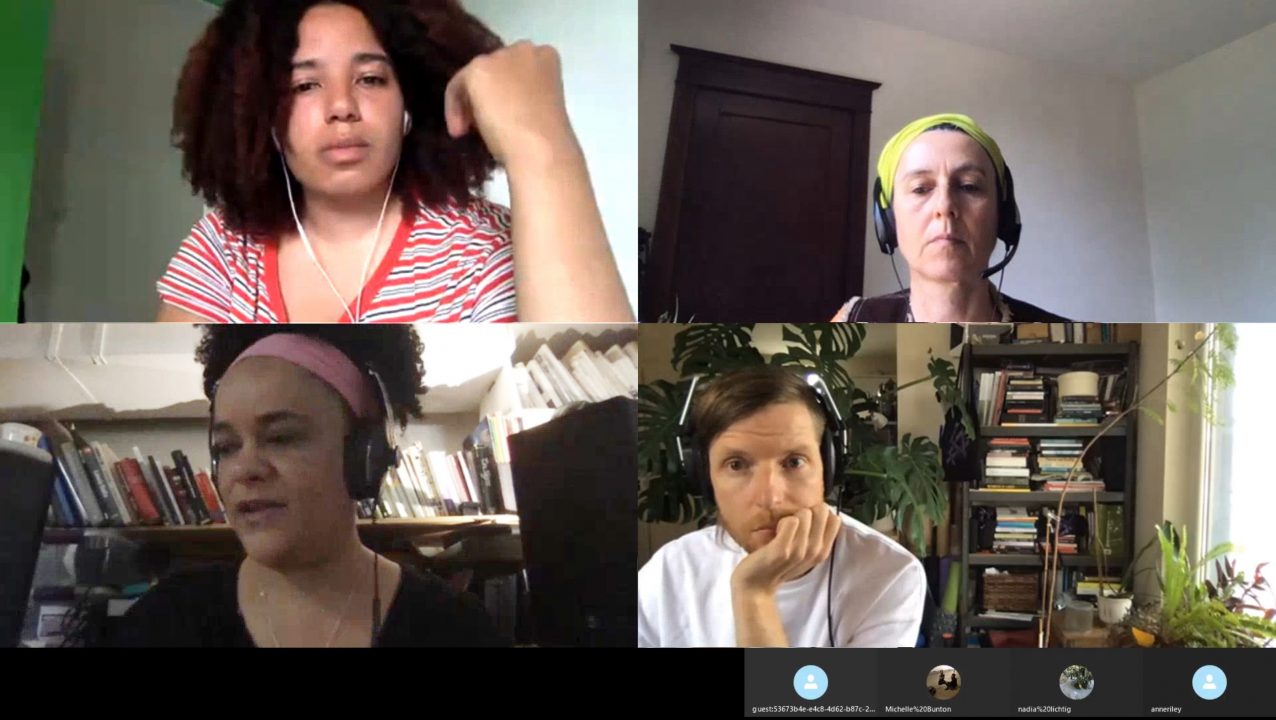
Image: Drift project artists Joefa Ntjam (top-left), Jol Thoms (bottom-right), and artist/program coordinator Elvira Hufschmid (top-right) join special guest Katherine McKittrick (bottom-left) in a reading and discussion of her new book Dear Science and Other Stories.
The Drift project is about expanding perspectives, opening up to new possibilities and new ways of thinking. Drift curator Sunny Kerr speaks to the uncertainty of this process in a talk he gave for the McDonald Institute Art of Dark Matter, Dark Matter Day event. “We engaged on this adventure, which is a residency driven exhibition, which means that we don’t know what the artists are going to make … Everyone was engaged in a kind of mutual exchange with no real pressure to define an outcome. … What characterized this project is the unpredictability, the waiting to see what will happen.”
No small factor of uncertainty in this project was the global pandemic and the monumental impact it has had and continues to have on everyone’s lives. Staying connected virtually through this challenging time helped the artists and coordinators keep momentum behind the project. In the end, only Jol Thoms was able to travel to Kingston to install his artworks himself. Josèfa Ntjam worked with the Agnes curatorial and installation staff over Zoom to install her work. Nadia Lichtig’s highly technical piece necessitated the coordination of two lighting technicians, one in Marseille where Lichtig could be on site, and another at the gallery to re-create the unique set-up. Meanwhile, Anne Riley’s piece has a further barrier as she intends to create a “dark matter garden” in front of the Agnes Etherington Art Centre. Riley has provided a video to be included in the current exhibition display and plans to install the garden in the Spring.
Sunny Kerr makes a parallel between Drift and the dark matter detectors in SNOLAB, that are drifting through space and waiting for a signal. The Drift project itself is an experiment, and takes inspiration from other art and science engagements, and art projects relating to particle physics and dark matter. CERN and Perimeter Institute have regular artists in residence, and in 2006, the Agnes and SNOLAB held an artist residency for the exhibition: Neutrinos: They are Very Small.
The Drift experiment is not over however, even now, with the artwork on display in the gallery, we don’t know what the results will be. Art needs observers to create meaning. There are infinite ways that individuals can engage with the project. A theoretical physicist might see something in a new way and explore a new idea, a family might visit the gallery and be inspired to learn more about SNOLAB, or a high school student might see a link between art and science that influences their future.
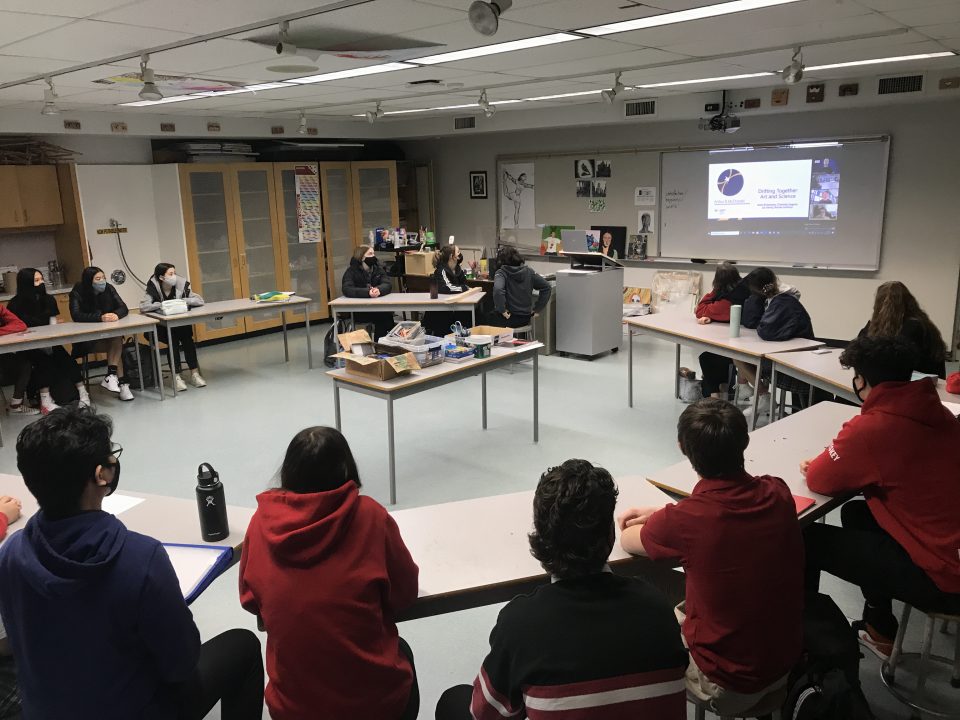
Image: High school students in Burnaby, BC. Connect with Mark Richardson and Charlotte Gagnier for Drifting Together, the education program co-developed by the Agnes and McDonald Institute. Photo credit: Joe Muise
The Agnes is open and the exhibition runs to May 30th. Visitors can view the exhibition Tuesday–Friday, 10 am–4:30 pm, Thursday, 10 am–9 pm, and Saturday and Sunday, 1–5 pm. Admission is free, donations are welcome.
The Online Exhibition is also now available. The artworks are presented in rich detail, and dynamic multimedia tells the story of Drift: Art and Dark Matter. Enjoy!
Agnes is hosting “Deep Looking” on March 23rd. This is a guided viewing of select Drift artwork in which participants are encouraged to make a meaningful connection with the work.
The “What is Dark Matter?” event on March 27th features McDonald Institute Education and Outreach Officer Dr. Mark Richardson and Dr. Renée Hložek, Assistant Professor at the Dunlap Institute of Astronomy and Astrophysics and the Department of Astronomy and Astrophysics at University of Toronto. The pair will present a dark matter primer and discuss links with the Drift exhibition.
Stay tuned for more ways to engage with the project.
